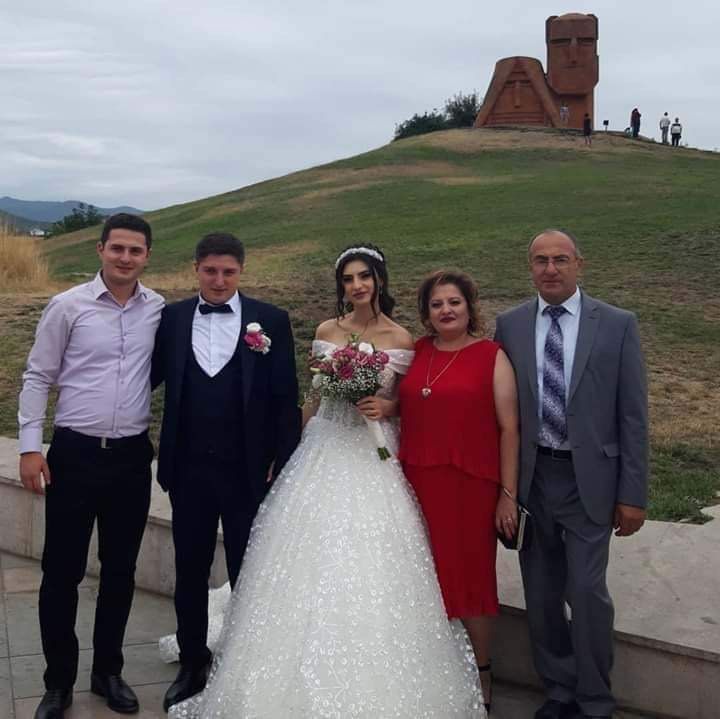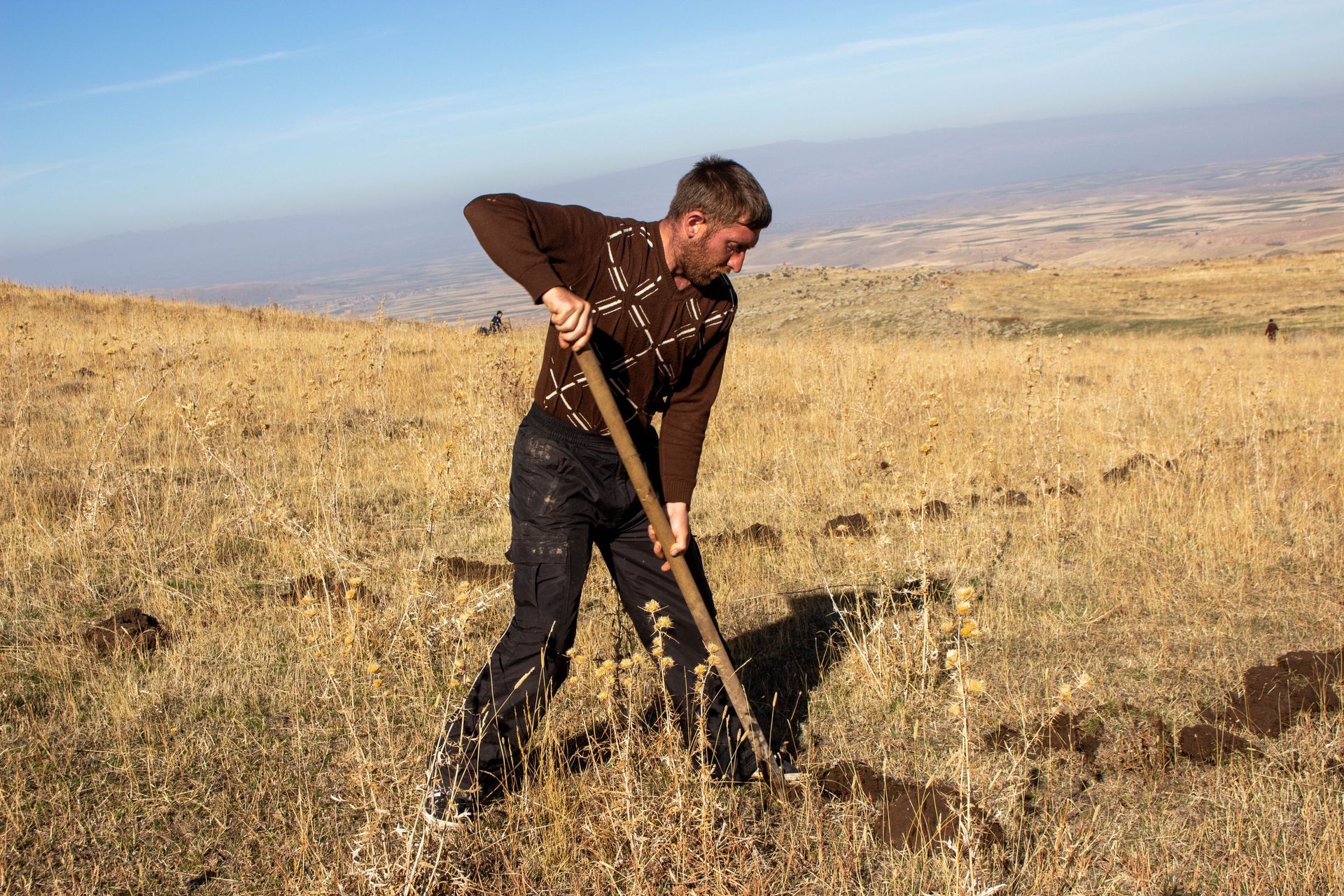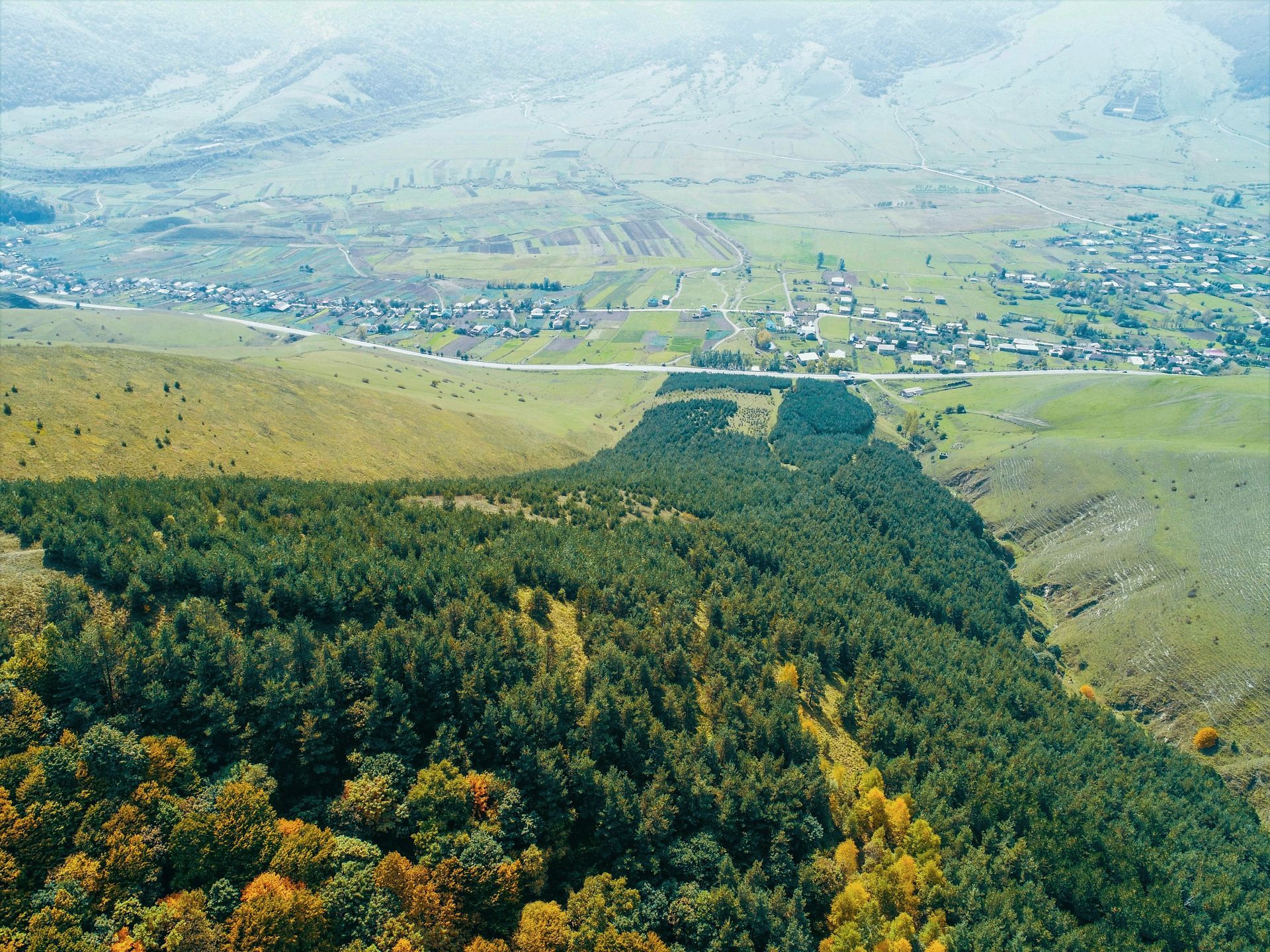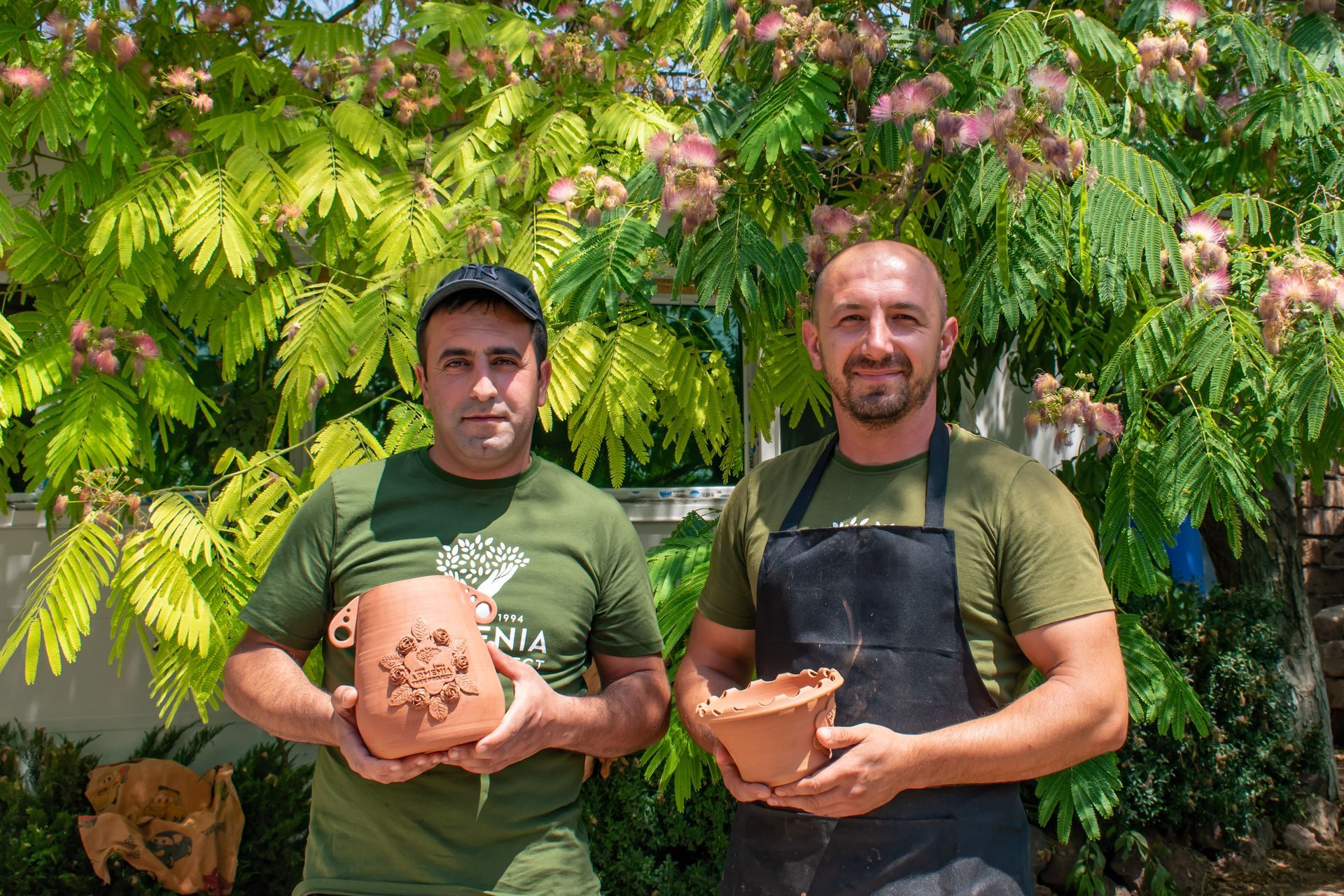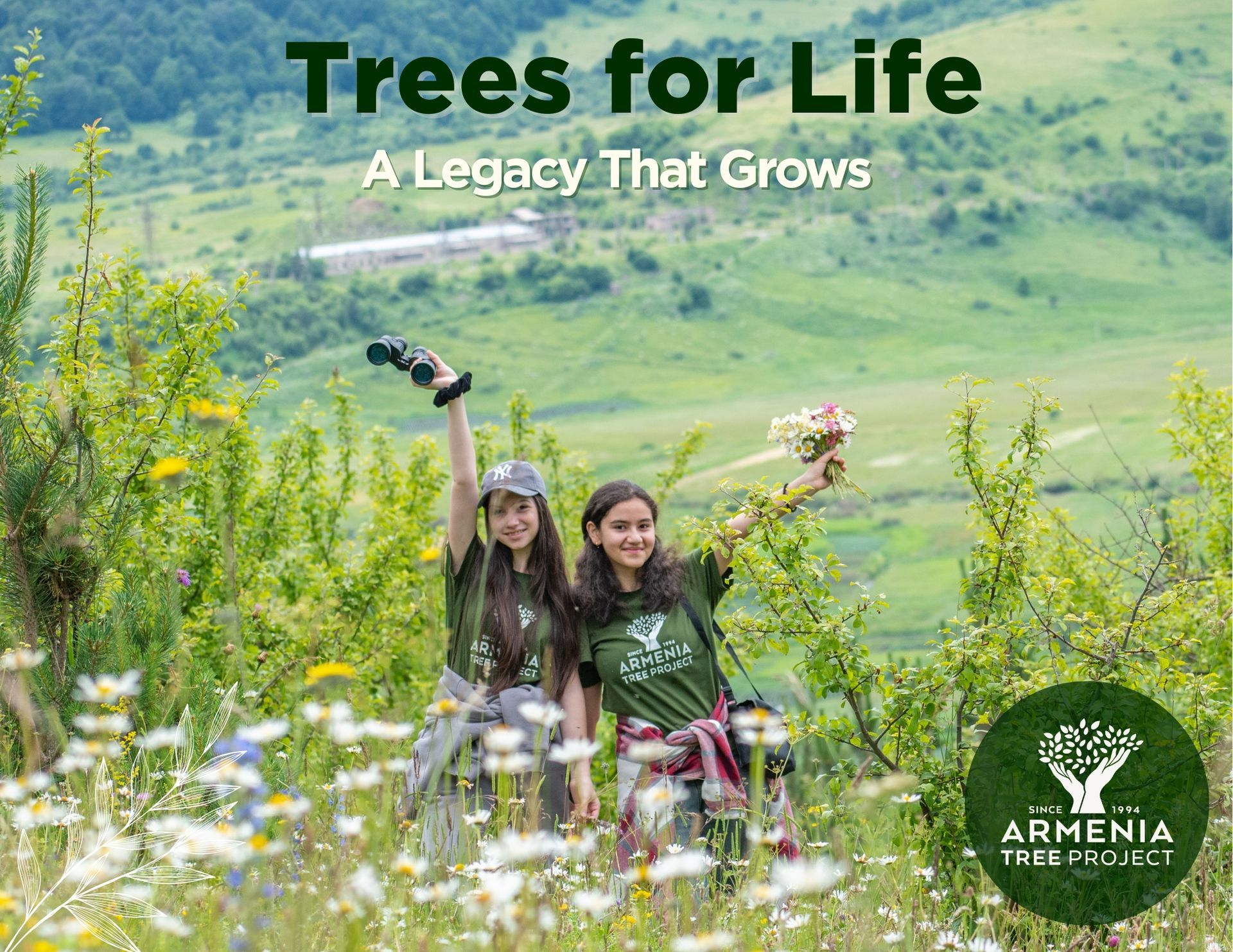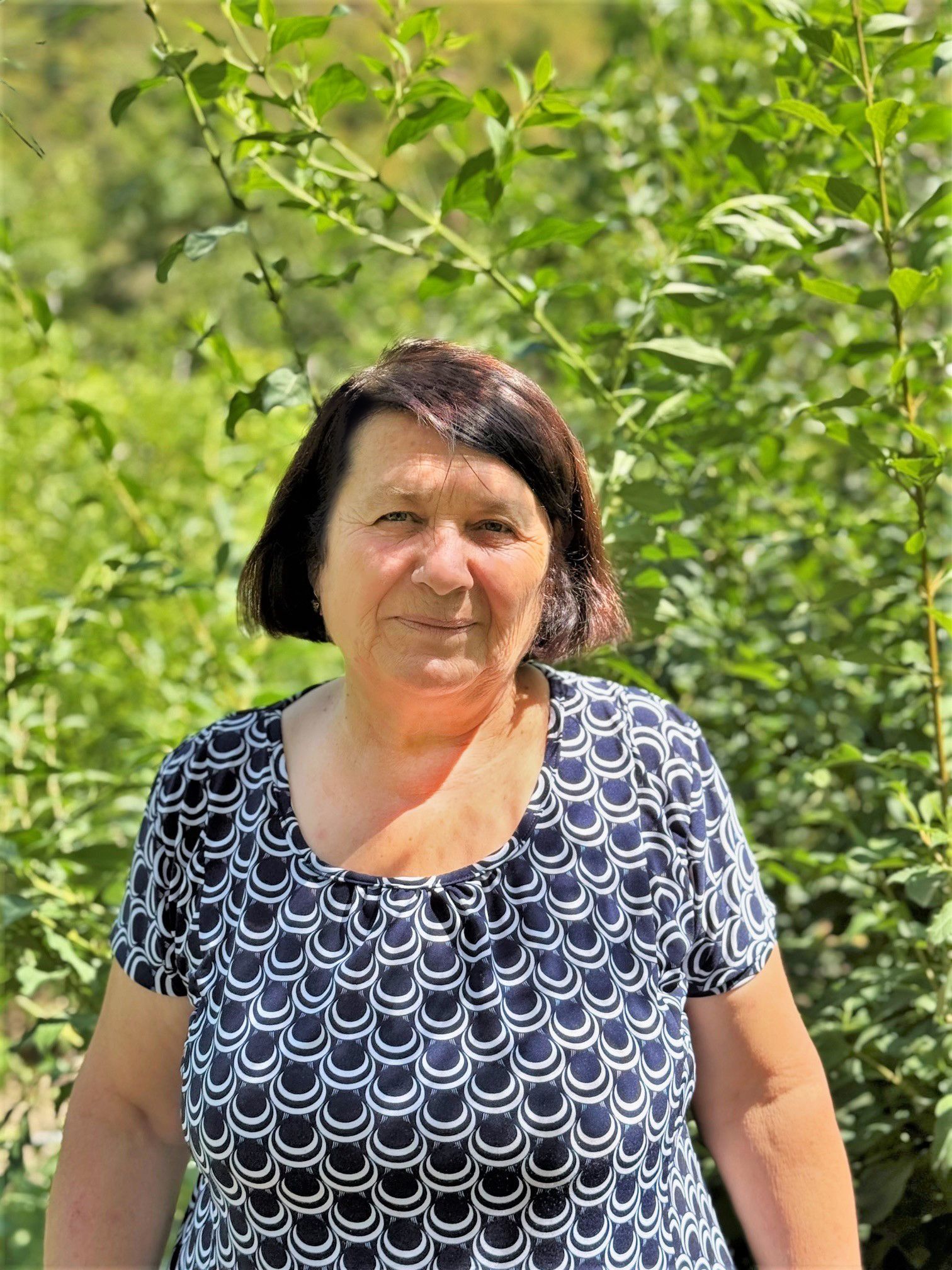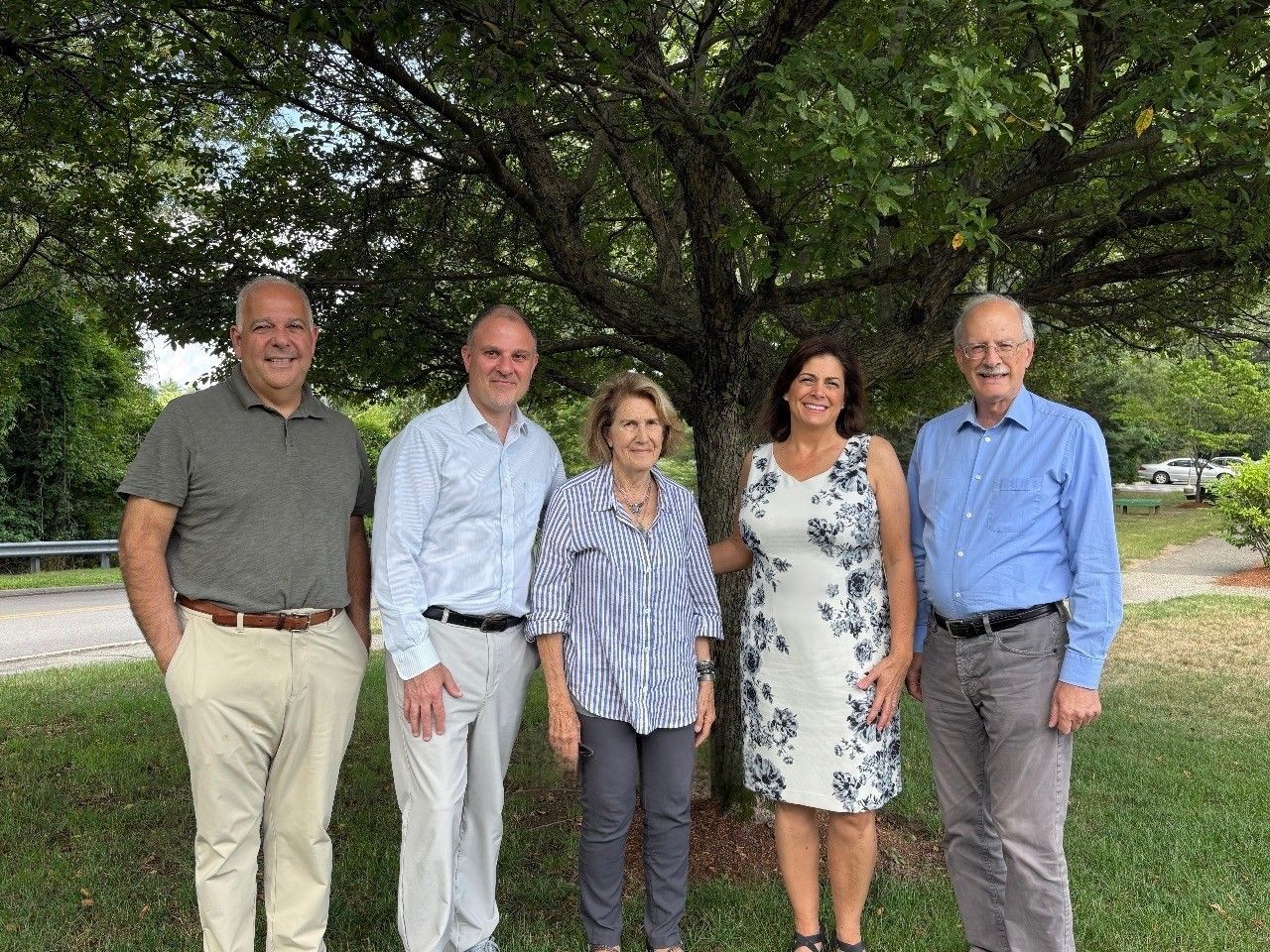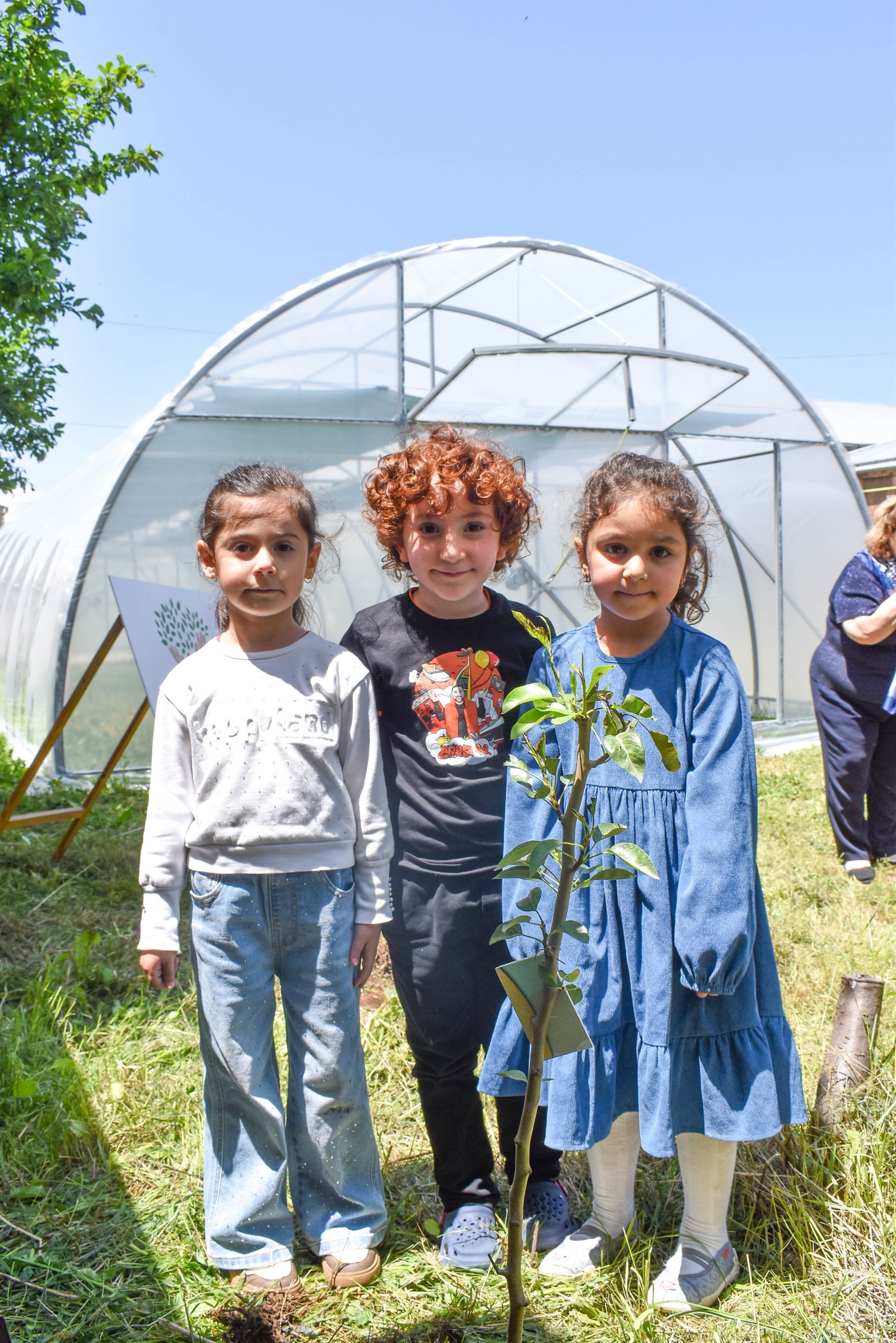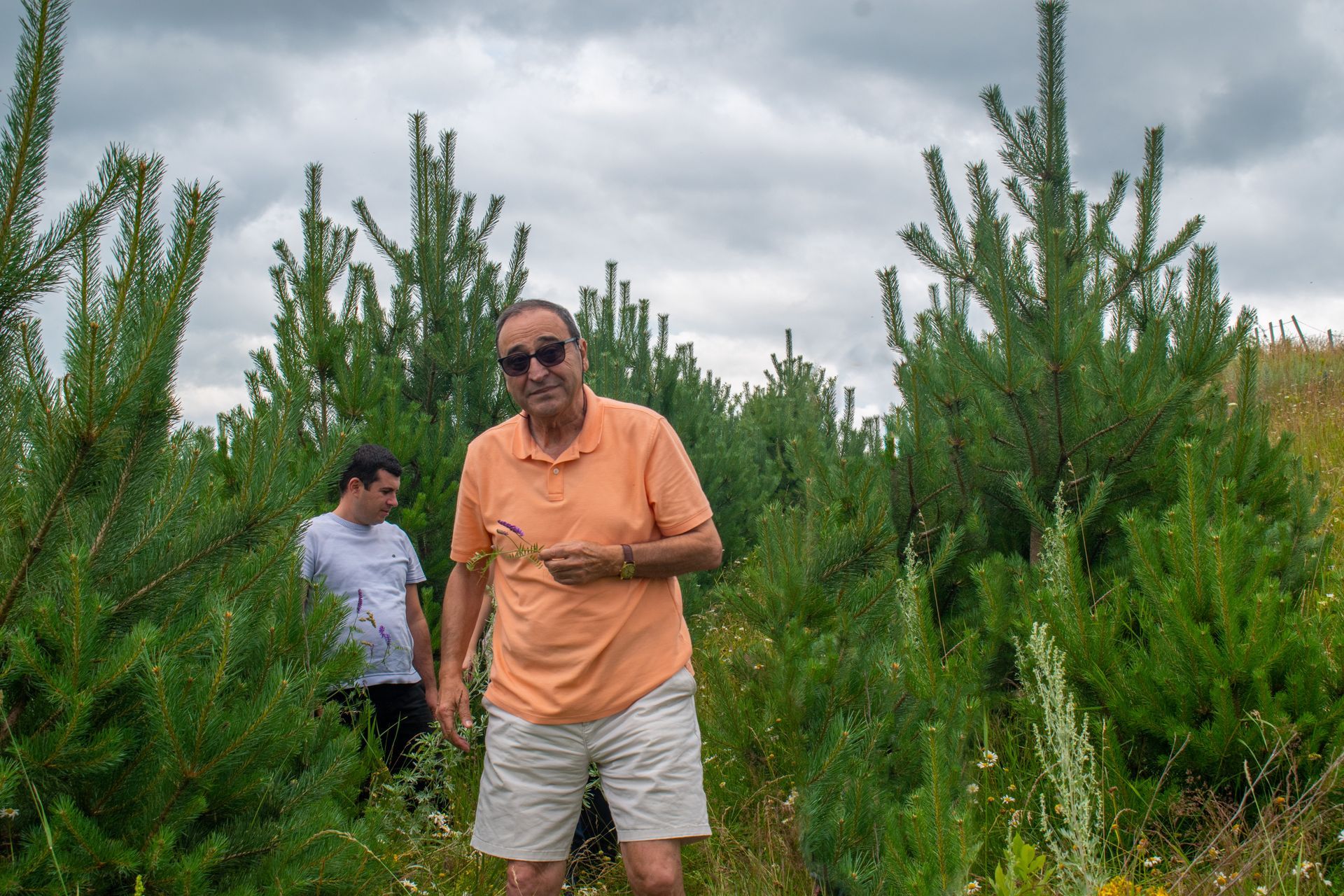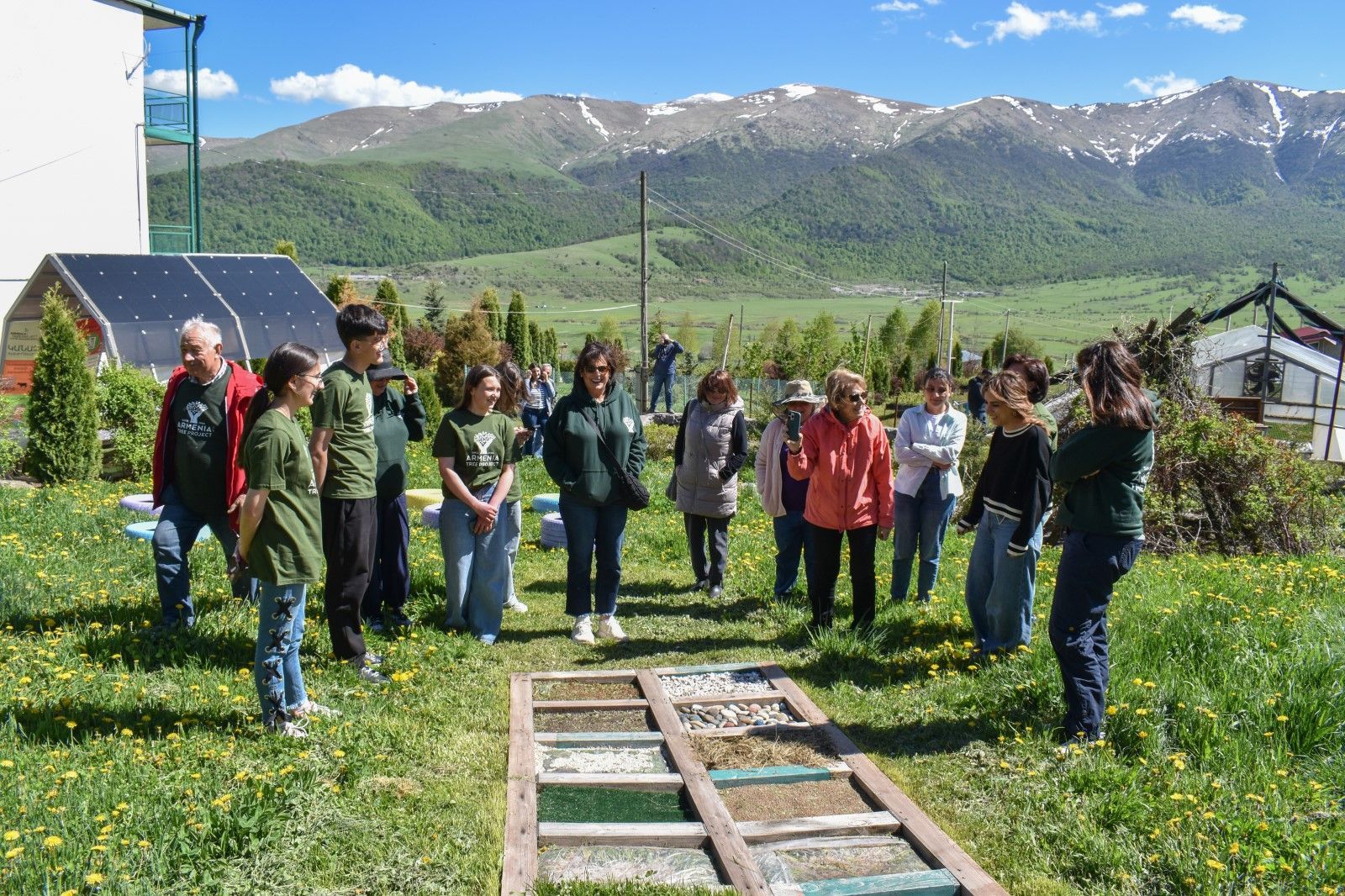Rooted Resilience: A Spotlight on an Armenia Tree Project Employee from Artsakh
In the Armenia Tree Project office in Yerevan, which is filled with the comforting aroma of tea, we sit down with Karen Aghajanyan, a displaced Artsakh resident, and now an ATP employee, to discuss his journey. Karen, among the 120,000 displaced, comes from Askeran in Artsakh. He now dedicates his skills to ATP's Backyard Nursery Program.
His profound connection to the land which was cultivated through generations, faced a tumultuous turn when conflict swept through Artsakh, encircling it in a blockade. Our conversation explores the trials of life amid the blockade, subsequent war and exodus, and the resilience needed to rebuild after bidding farewell to one's homeland. Drawing on his extensive background, including overseeing agriculture in Askeran and serving as the former Deputy Minister of Agriculture, Karen shares experiences and insights, notably his role in ATP's impactful Backyard Greenhouse Project in his native region.
Can you describe your personal experiences during the blockade, particularly how you navigated the challenges and what impact it had on your life?
I was in Yerevan when the blockade started. I had come for a medical appointment on December 11, 2022, intending to return the next day. However, the roads closed and I was stranded in Goris for 27 days. I joined a group of fellow Artsakhtsis, navigating a military-designed route through forests and rocky mountains to get back home. Despite the difficulty, the urgency to get to my family drove me forward and, thankfully, we were reunited.
Initially, we believed the blockade would be short-lived, but it persisted till the very end. Food shortages were severe. Villagers with stored provisions managed to endure, but city dwellers faced more dire circumstances. Urban living became increasingly challenging due to a shortage of fuel. The limited supply was used sparingly, mainly for essential agricultural tasks like harvesting.
The scarcity of bread became critical as our enemies actively prevented the harvesting of wheat fields, resorting to gunfire against field workers. Before the 2020 war, Artsakh produced over 100,000 tons of wheat, significantly impacting Armenia's economy. The loss of Artsakh is not just an economic setback, it’s a huge blow to our security as well, with Azeris now not only at the border but also encroaching on Armenian territory.
For over a month, trucks carrying humanitarian aid from Armenia were stranded at the border, denied entry. On September 18, two Red Cross trucks from Azerbaijan were finally allowed into Stepanakert, however, war erupted the next day, prompting our evacuation. The Azeri forces approached populated areas, with Martuni and Martakert experiencing atrocities as their roads to Stepanakert were sealed. They entered villages, taking hostages, causing fatalities. They had completely encircled Artsakh, and while we resisted and inflicted damage, fighting to the end would have resulted in everyone's demise, especially with no assistance from Armenia or any other country—no help was expected or received.
Did you ever foresee a situation where everyone would be compelled to leave?
If Artsakh wasn't surrounded and if there had been an open corridor to Armenia, nobody would have left. The encirclement left us with no choice—either integrate or leave. Not even in our worst nightmares did we imagine the entire population leaving, but the circumstances forced us.
Of course, integration was out of the question due to the recent conflicts and atrocities. The vast difference in civility and society levels makes reconciliation impossible with Azeris. The brutal methods they employ, such as beheadings, mirror historical aggression against us. They undergo constant indoctrination and are taught from a young age that Armenians are enemies. Their leaders perpetuate distorted historical narratives, denying Armenians' ancient heritage, which hinders any possibility of reconciliation.
The war and tragic gas depot explosion created an incredibly challenging situation. Many, like myself, have experienced every war since the 90’s and have no desire for more. Witnessing the losses and tragedies, including fathers, sons, and children in the same family, has made people reluctant to endure further conflict and to subject their descendants to such situations. The toll is too great.
Can you describe your displacement and arrival in Armenia?
We departed for Armenia on September 25, just a day after the road opened. It took us 30 hours to get here by car, with limited belongings—mainly clothing and some food. Our main concern was the future, pondering where we would live and how we would sustain ourselves. We faced no major issues on the road, although others weren't as fortunate, encountering theft and interrogations by Azeri military. After a day in Goris and about 10 days in Abovyan, we settled in Yerevan, where we currently reside.
What was the hardest part?
Abandoning our ancestral home, large enough for 20-30 people. In hindsight it becomes even more difficult, as we realize that we left behind the culmination of generations' efforts, including the resting places of our forebears.
My grandmother used to share stories of escaping the Turkish attacks in 1918-1920, where they sought refuge in the next village. A similar pattern unfolded in the 90’s. However, in the recent conflict, the Azeri military's advanced weaponry eliminated any possibility of escape or hiding within villages. It's painful that, for the first time in history, there's no Armenian left in Artsakh, and with no way back.
What key factors are essential for displaced families to be able to rebuild a sustainable life here?
Many, like myself, wish to remain in Armenia. The primary challenge for displaced families is securing stable work and housing. Without government support, ongoing rent expenses make sustainability difficult. While there's talk of programs or neighborhoods for Artsakhtsis, nothing concrete has materialized. If displaced Artsakhtsi families in Armenia can secure stable housing, it would significantly deter migration. Providing a home is often enough to encourage families to stay.
What led you to work with the Armenia Tree Project?
In early September 2021, I met with Jeanmarie (ATP Executive Director), to discuss the proposed Backyard Greenhouse Project in Artsakh. I had helped them build and manage the project. I met again with Jeanmarie in October 2023 to discuss the fate of the project and of Artsakh. During the meeting, they offered me a job with the NGO, and without much hesitation, I accepted. I was already familiar with the organization and its mission. Currently, I'm working on the Backyard Nursery Program, which aligns well with my profession. I appreciate the opportunity to visit provinces daily and meet people, many of whom have been refugees, so we share a unique understanding of each other's experiences. Helping them becomes a way for me to find some peace and purpose.
Can you provide insights into your background and what life was like in Artsakh before?
I spent all my sixty years in Askeran, where I was born and raised. It had been home to not just me but also my parents and grandparents. We were four siblings - two sisters, two brothers. I remained in my father’s house. I graduated from the Armenian National Agrarian University in Yerevan, and chose to return to Askeran immediately after, despite tempting offers to stay. Living in Artsakh offered favorable conditions for both life and work. The nature was incredibly abundant, with almost no winter in Askeran. After a few days of snow, warmth would return, making life there easy and enjoyable.
I was responsible for curating agriculture in Askeran District. And prior to that I worked in the Ministry of Agriculture as the Deputy Minister. I helped manage agricultural programs throughout Artsakh. The region's milder climate allowed for diverse agricultural pursuits, although vegetable production traditionally lagged. Historically, Artsakhtsi’s mostly dealt with animal farming and viticulture, which was very much developed. There was huge potential and lots of progress being made.
In recent years, I collaborated with organizations like Armenia Tree Project and Green Lane NGO to establish 24 backyard greenhouses in Askeran, providing families with valuable training to cultivate vegetables. It was a crucial contributor to food security and self-sustainability within the community. I think it was in August of 2021 when ATP first came to us with the project. Our reaction was very positive, and in just a few months we started construction. It was a great experience for the families to start small. They were motivated, and getting new ideas for adding crops and expanding, but of course, everything was disrupted. During the blockade, we received potato seeds and the greenhouses emerged as a beacon of sustenance, providing nourishment to many when food was scarce.
Did you personally engage in cultivation, aside from your involvement in the greenhouse project?
I used my free time after work to grow a variety of crops, supplying my family and relatives. We had excellent apples all year round, particularly the delightful ‘Pink Lady’, a delicious variety that I brought from the US. I grew pears, persimmons, as well as staple crops like wheat, corn.
Could you share more details about your family and current living arrangements?
I have two sons; one of them is married and has my only grandchild, Karen Jr. They currently live with me as my son and his wife continue their job search. My grandson tells me, “Let’s go back to Askeran, I don’t like it here”. Unfortunately, there’s no space at the kindergartens and long waiting lists. Currently, we reside in a rented apartment in Komitas, Yerevan. Without our own home, the future is uncertain, and I can't predict how long we'll stay in our current situation or what lies ahead for us.
When you contemplate the future, what are your thoughts and aspirations?
My hope centers around my children, the youth. Having lived most of my life already, my primary concern is for them and their future, hoping they can stand on their own two feet.
As a concluding question, we always like to ask: Which tree holds a special place in your heart?
I’m especially fond of the platanus tree. It brings back memories of home in Askeran, where 60-70-year-old plane trees dotted the landscape and were visible from every corner. The longevity of the plane tree resonates with me, and in our region, we call it ‘Tnjri’ (/tənd͡ʒəˈɾi/).
